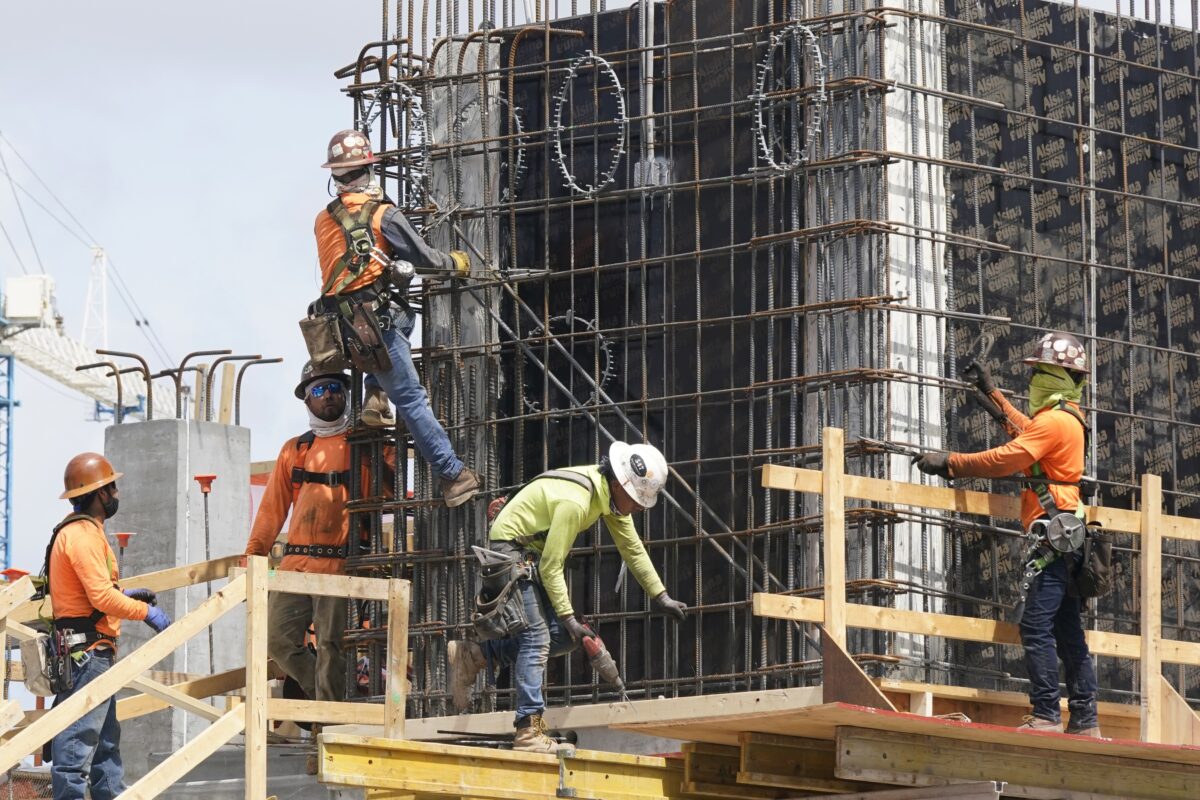


The latest private sector employment report came in far above consensus forecasts, suggesting persistent inflationary forces and more pressure on the Federal Reserve to keep cooling the economy aggressively.
Payroll processor ADP reported on Mar. 8 that U.S. private employment increased by 242,000 jobs last month, considerably higher than consensus forecasts of 200,000 positions.
Also, data for January were revised higher to show 119,000 jobs added instead of 106,000 as previously reported.
Wage growth pressures eased a little but remained elevated in February, with job-stayers seeing a 7.2 percent pay boost in annualized terms and job-changers notching a 14.3 percent hike. That’s down from 7.3 percent and 14.9 percent, respectively, in January.
“There is a tradeoff in the labor market right now,” ADP chief economist Nela Richardson said in a statement. “We’re seeing robust hiring, which is good for the economy and workers, but pay growth is still quite elevated. The modest slowdown in pay increases, on its own, is unlikely to drive down inflation rapidly in the near-term.”
Wage growth tends to feed into broader inflationary pressures, with Federal Reserve officials keeping a close eye on labor market dynamics for signs of cooling inflation. But so far Fed officials have seen evidence that the jobs market remains more resilient than expected and with it, inflation is proving more persistent.
“Despite the slowdown in growth, the labor market remains extremely tight,” Fed Chair Jerome Powell said in testimony on Tuesday before the Senate Committee on Banking.
“Although inflation has been moderating in recent months, the process of getting inflation down to 2 percent has a long way to go and is likely to be bumpy,” Powell said, adding that the hikes in interest rates are “likely to be higher” than earlier projections.
Before Powell’s remarks, traders mostly expected the Fed to raise rates by 25 basis points at its next rate-setting meeting on Mar. 21–22. After Powell’s hawkish remarks, federal funds futures contracts jumped to price in a bigger hike of 50 basis points.
In the face of soaring inflation, the Fed last year raised borrowing costs at the fastest pace in 40 years, but last month reduced the pace of rate increases to a quarter of a percentage point.
“The Fed could be forced to go 50 basis points at their next Federal Open Market Committee meeting if we get another strong employment report,” said Torsten Slok, chief economist at Apollo Global Management, who sees a terminal fed funds rate possibly above 6 percent.
“The momentum in the economy is so strong that we may have to get into 2024 before the fed funds rate peaks,” he added.
The ADP report comes two days ahead of Friday’s closely watched government jobs report, which a Reuters poll of economists indicates will show payrolls increased by 203,000 last month, down from 517,000 in January.
While January’s nonfarm payrolls report came in well above expectations, experts said some of that was due to annual adjustments and warmer-than-usual weather.
The Fed chief has said repeatedly that the central bank will be data-dependent in its monetary policy decisions, but the numbers have been volatile.
In a February speech in Washington, Powell said he saw evidence of disinflation, but noted that it had been mostly confined to the goods sector. He added that the Fed was looking for more signs of inflationary pressures easing in services and in areas like apartment rents, which are reflected in the numbers with a lag.
During Tuesday’s testimony, Powell reiterated the Fed’s commitment to quell price pressures: “If the totality of the data were to indicate that faster tightening is warranted, we would be prepared to increase the pace of rate hikes.”
Market expectations that the Fed will push rates higher and keep them there longer before easing have sent yields on bonds soaring.
Yields on the 10-year Treasury recently broke above 4 percent, and on Tuesday, after Powell’s remarks, the two-year Treasury note topped 5 percent for the first time since 2007.
Rising yields on government securities means higher debt servicing costs, which burden taxpayers.
“Treasury yields have climbed considerably over the last year, which means the federal government has been shelling out more and more just to service its outstanding debt,” William Luther, director of the Sound Money Project at the American Institute for Economic Research (AIER) told The Epoch Times in an emailed statement.
Luther said there’s no immediate danger of the debt burden becoming unsustainable, which technically would occur when the inflation-adjusted interest rate permanently exceeds the economy’s rate of long-run economic growth.
“We are still pretty far from the point of no return,” he said, noting that real gross domestic product growth is currently trending at around 2.25 percent per year, while Treasury inflation-protected securities are trading at around 1.67 percent over a five-year horizon and at around 1.60 percent over a 10-year horizon.
Even if those yields were to jump above the long-run rate of growth, the government would “likely be able to weather the storm so long as markets expect the situation to be temporary.”
Still, even though a default isn’t imminent, Luther cautioned this shouldn’t be seen as a “call to dance right up to the edge.”
“The closer the government gets to a yield-greater-than-growth scenario, the more likely bondholders are to abandon the government’s bonds in favor of safer assets. That reduction in demand would put greater pressure on real yields, making a default more likely,” he said.
Luther added that the rise in yields reflects an opportunity cost of government borrowing and serves as a reminder of the problem that big government borrowing crowds out private sector investment.
Reuters contributed to this report.
